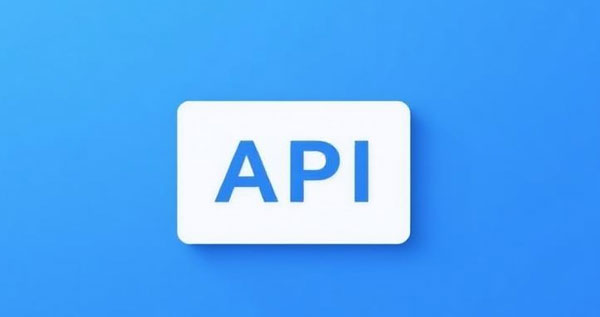多平台球鞋資料抓取實戰:billys_tokyo 與 atoms 的 API 應用與標準化整合
在前面系列文章中,我們已經介紹了 Sneaker API 的基本知識、進階數據解析與接口優化、以及實時數據監控與價格比對工具的構建。本文將進一步聚焦於如何針對具體數據平台(例如 billys_tokyo、atoms 等)進行接口調用與數據抓取,並展示實戰案例與代碼示例,幫助你在實際開發中快速上手。
1. 數據平台概述與特點
billys_tokyo 平台
billys_tokyo 是一家專注於潮流球鞋的銷售平台,其網站界面設計精美,產品資訊豐富。平台上的數據更新速度快,包含商品詳細資訊(如品牌、型號、價格、庫存狀態等),但部分欄位可能帶有平台特有的標識或格式。
atoms 平台
atoms 作為另一個知名球鞋數據平台,提供多樣化的商品展示與較為標準化的資料結構。其數據雖然與 billys_tokyo 存在細微差異,但同樣涵蓋了產品基本資訊,並適合與其他平台數據整合,實現價格比對功能。
這些平台的數據格式可能略有不同,因此我們需要在抓取數據時,根據每個平台的 API 接口特性進行個性化調用與解析,並將數據映射到統一的數據模型中。
2. billys_tokyo 數據抓取實戰
以下以 Python 為例,說明如何從 billys_tokyo 平台調用 API 並解析商品資料。這段程式碼可以幫助你理解如何設置基本的錯誤處理和欄位解析策略,確保數據抓取過程更加穩定:
import requestsimport json
def fetch_billys_tokyo_data(url):
headers = {
'X-Luckdata-Api-Key': 'your_key'
}
try:
response = requests.get(url, headers=headers, timeout=10)
if response.status_code == 200:
data = response.json()
# 調試用輸出:觀察資料結構
print(json.dumps(data, indent=2, ensure_ascii=False))
# 根據實際返回資料結構提取關鍵欄位
product = {
'brand': data.get('brand', '未知品牌'),
'model': data.get('model', '未知型號'),
'price': data.get('price', '未知價格'),
'stock': data.get('stock', '無庫存資訊')
}
return product
else:
print(f"Error: Received status code {response.status_code}")
except requests.exceptions.RequestException as e:
print(f"Request failed: {e}")
return None
# 示例調用
billys_url = 'https://luckdata.io/api/sneaker-API/get_7go9?url=https://www.billys-tokyo.net/shop/g/g6383800022045/'
product_billys = fetch_billys_tokyo_data(billys_url)
print("billys_tokyo 數據:", product_billys)
在這段代碼中,我們首先設置了基礎的錯誤處理機制,避免因為網絡請求問題導致程式崩潰。對於返回的數據,我們會檢查欄位是否存在,並為每個欄位設置合理的預設值,這樣即使某些數據缺失,也能保證程序正常運行。
3. atoms 數據抓取實戰
atoms 平台的資料結構相對規範,但仍需注意欄位命名差異。以下展示如何根據 atoms 的結構進行解析,並額外加上容錯設計:
import requestsimport json
def fetch_atoms_data(url):
headers = {
'X-Luckdata-Api-Key': 'your_key'
}
try:
response = requests.get(url, headers=headers, timeout=10)
if response.status_code == 200:
data = response.json()
# 顯示 JSON 結構供分析參考
print(json.dumps(data, indent=2, ensure_ascii=False))
product = {
'brand': data.get('productInfo', {}).get('brand', '未知品牌'),
'model': data.get('productInfo', {}).get('model', '未知型號'),
'price': data.get('pricing', {}).get('retailPrice') or data.get('pricing', {}).get('discountedPrice', '未知價格'),
'stock': data.get('inventory', {}).get('available', '無庫存資訊')
}
return product
else:
print(f"Error: Received status code {response.status_code}")
except requests.exceptions.RequestException as e:
print(f"Request failed: {e}")
return None
# 示例調用
atoms_url = 'https://luckdata.io/api/sneaker-API/get_atoms_sample?url=https://www.atoms-example.com/product/12345'
product_atoms = fetch_atoms_data(atoms_url)
print("atoms 數據:", product_atoms)
這段代碼示範了如何根據 atoms 平台返回的資料結構進行解析。我們進一步為價格欄位設置了備選方案,以處理不同情況下的數據結構差異。
4. 多平台異步抓取與整合應用
當需同時處理多個平台的資料時,使用異步請求(asyncio + aiohttp)能大幅提升效率。以下展示一個標準化整合流程,並引入簡單的容錯與整合策略:
import asyncioimport aiohttp
def normalize_product_data(raw_data, source):
if source == 'billys_tokyo':
return {
'brand': raw_data.get('brand', '未知品牌'),
'model': raw_data.get('model', '未知型號'),
'price': raw_data.get('price', '未知價格'),
'stock': raw_data.get('stock', '無庫存資訊')
}
elif source == 'atoms':
return {
'brand': raw_data.get('productInfo', {}).get('brand', '未知品牌'),
'model': raw_data.get('productInfo', {}).get('model', '未知型號'),
'price': raw_data.get('pricing', {}).get('retailPrice') or raw_data.get('pricing', {}).get('discountedPrice', '未知價格'),
'stock': raw_data.get('inventory', {}).get('available', '無庫存資訊')
}
return {}
async def fetch_data(session, url, source):
try:
async with session.get(url, headers={'X-Luckdata-Api-Key': 'your_key'}) as response:
data = await response.json()
return normalize_product_data(data, source)
except Exception as e:
print(f"{source} 抓取失敗:{e}")
return {}
async def fetch_all_products(urls_sources):
async with aiohttp.ClientSession() as session:
tasks = [fetch_data(session, url, source) for url, source in urls_sources]
return await asyncio.gather(*tasks)
# 多平台來源配置
urls_sources = [
('https://luckdata.io/api/sneaker-API/get_7go9?url=https://www.billys-tokyo.net/shop/g/g6383800022045/', 'billys_tokyo'),
('https://luckdata.io/api/sneaker-API/get_atoms_sample?url=https://www.atoms-example.com/product/12345', 'atoms')
]
products = asyncio.run(fetch_all_products(urls_sources))
print("多平台標準化數據:", products)
這段代碼展示了如何使用異步請求來提高抓取效率。我們將數據標準化後返回,並使用異常處理來確保即使某些請求失敗,其他請求仍能正常執行。
5. 實務應用場景與延伸方向
完成基礎抓取與標準化後,即可進一步整合進價格比對系統、用戶提醒機制與資料分析模組。常見應用包括:
多平台同型號比價服務:幫助使用者挑選最便宜的入手機會
缺貨監控與補貨通知:當庫存重新開放即推送通知
搭配歷史價格資料形成趨勢圖:預測潛在價格走勢
透過這些應用,你可以將原始的 API 數據轉化為具價值的實務工具,真正落實數據驅動的球鞋應用開發。
結語
掌握不同數據平台的接口調用與數據抓取技巧,是構建高效、穩定且易於擴展的球鞋數據應用的基礎。本文透過 billys_tokyo 與 atoms 的實戰示例,展示了如何靈活應用 API、標準化數據結構並實作異步抓取。未來你可進一步擴展多平台整合與價格預測功能,打造屬於自己的 Sneaker Intelligence 系統。
Articles related to APIs :
A Comprehensive Guide to Sneaker API: Your Ultimate Tool for Sneaker Data Access
Free Sneaker API Application: A Detailed Guide and Usage Introduction
Advanced Data Parsing and API Optimization: Building a More Efficient Sneaker API Application
How to Enhance Your Sneaker Data Collection with Sneaker API
How to Use LuckData Sneaker API to Get Real-Time Data from Billys Tokyo




